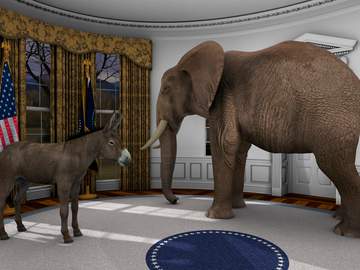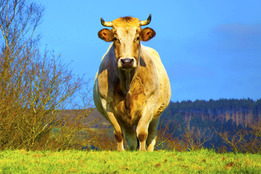What to KnowIn the political system of the United States, Democrats are largely associated with liberalism (a political philosophy based on belief in progress) while Republicans are associated with conservatism (a political philosophy based on tradition and social stability). However, the beliefs and positions of political parties change over time, so it is not always accurate to consider Democrat and Republican to be synonyms of liberal and conservative.

What is the difference between a Democrat and Republican?
Democrats are often thought of as liberal, in the sense that they are in favor of government playing a larger role in social affairs. Republicans are often thought of as conservative, in the sense that they tend to advocate for smaller government. That is a very simplified explanation; what follows is a slightly more elaborate one.
The Democratic Party is generally associated with more progressive policies. Democrats typically advocate for civil rights of ethnic and religious minorities, and they support a safety net for individuals (such as various social welfare programs, including Medicaid and food stamps). Democrats often endorse funding these programs and initiatives through taxation. In addition, Democrats support environmental protection programs, gun control, less-strict immigration laws, and worker rights.
Many Republicans advocate for reduced taxes as a means of stimulating the economy and advancing individual economic freedom, and they generally support conservative social policies. Republicans also tend to desire an economy with fewer government regulations and fewer government-funded social programs. Regarding foreign policy, the Republican Party traditionally has supported a strong national defense and the aggressive pursuit of U.S. national security interests. Republicans also (in most cases) support states’ rights against the power of the federal government.
Historical shifts of the Democratic and Republican parties
It’s important to note that depending on what era of American history you’re looking at (sometimes even what decade or election cycle), the values, beliefs, and preferred policies that define Democrat and Republican can be quite different, running counter to our modern-day notion of liberal Democrats and conservative Republicans. That’s because both Democrat and Republican refer to members of political parties, and the ideologies and positions of political parties are subject to change.
The Democratic Party, for example, has changed significantly during its more than two centuries of existence. During the 19th century the party supported or tolerated slavery, and it opposed civil rights reforms after the American Civil War in order to retain the support of most white Southern voters. By the mid-20th century, however, it had reinvented itself as a party supporting organized labor, civil rights, and progressive reform. Since President Franklin D. Roosevelt’s New Deal of the 1930s, the party has also tended to favor greater government intervention in the economy and to oppose government intervention in the private noneconomic affairs of citizens.
Similarly, although modern day Republicans are generally opposed to government intervention in the economy and are similarly conservative in their resistance to social change, during the 19th century the Republican Party stood against the extension of slavery to the country’s new territories and, ultimately, for slavery’s complete abolition. The point here is that the definitions of all words change and evolve over time, and designations like Democrat and Republican are particularly fluid.




